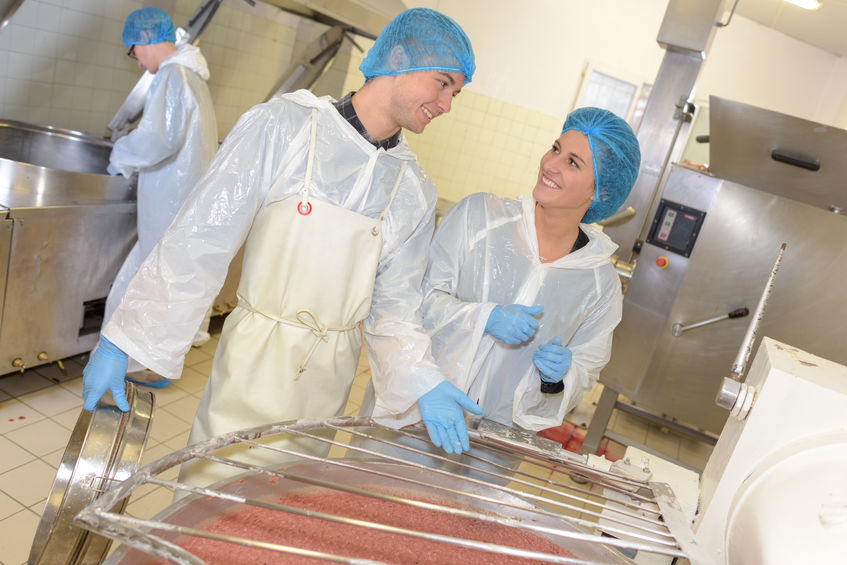As a lot of of my clients are food and beverage processors I thought it made sense to address this topic that is literally on top of everybody’s minds these days. The good news is current modern food safety systems in place today are already helping in combating the effects of Coronavirus. With that being said, there are other factors that play in an overall protection/safety scheme and should be considered. Let’s take a look.
Quick definition: SARS-CoV-2” and the disease it causes has been named “coronavirus disease 2019” (abbreviated “COVID-19”)
Food safety and potential risks. Six items to consider.
From a food safety point of view, there are a number of considerations regarding the potential risks of the Novel Coronavirus (COVID-19) to raw materials and associated foods. Here are 6 main ones to consider:
1.) How Coronavirus (COVID-19) survives.
Survival information indicates that this virus is relatively hardy and survives in serum, sputum and feces for at least 96 hours. In urine, it could remain alive at least 72 hours with a low level of infectivity.
Resource: Stability of SARS coronavirus in human specimens and environment and its sensitivity to heating and UV irradiation. – Biomed Environ Sci.2003 Sep;16(3):246-55.
2.) Personal Hygiene.
Therefore, excellent personal hygiene practices are required to limit the risks of food and raw materials to human pathogens including viruses. This is extensively addressed in modern food safety systems and includes focus on:
- Hand-washing.
- Suitable toileting facilities.
- Personal protective equipment (PPE).
- Exclusion of food handlers with symptoms of illness including sore throats, coughs and fever.
- Return to work sign-off by a qualified doctor.
- And so on…

3.) Face masks, face touching and air changes.
It looks like simple surgical face masks will not stop the transmission of the Coronavirus as they are too thin and not well fitting typically. To deal with aerosols, sufficient air changes are required to remove the aerosols rapidly from the environment. Also:
- Infection can also occur through the eye or if contaminated hands are used to touch the face.
- Minimum air changes in a food processing environment should be six air changes per hour.
Resource: Laura Geggel, https://www.livescience.com/face-mask-new-coronavirus.html.
4.) Coronavirus and Sanitizers.
If alcohol-based sanitisers are used following hand-washing, ‘ethanol, the most common alcohol ingredient, appears to be the most effective against viruses’, with 95% ethanol (ethanol-based and isopropanol-based respectively) were effective against SARS-CoV, and Middle East respiratory syndrome coronavirus (MERS-CoV).
Resource: National Center for Biotechnology Information, Alcohol Sanitizer, updated December 16, 2019 https://www.ncbi.nlm.nih.gov/books/NBK513254.
5.) Temperature – Something to think about.
Research on SARS-CoV showed that these viruses stayed stable at 4°C (39.2°F) and at room temperature 20°C (68°F) for at least two hours on a range of surfaces and in water.
SARS-CoV were inactivated by heat treatments of 90 min at 56°C (132.8°F), 60 min at 67°C (152.6°F) or 30 min 75°C (167°F). UV irradiation for 60 min of the virus in culture inactivated it.
 Inspec Quality Assurance – Quality Control: Enjoy safe, versatile data storage on an industry-standard SQL database for all your quality data: process controls, intake and outgo status measurements, machine conditions, maintenance procedures, food quality tests, environmental conditions, bacterial sweeps… everything.
Inspec Quality Assurance – Quality Control: Enjoy safe, versatile data storage on an industry-standard SQL database for all your quality data: process controls, intake and outgo status measurements, machine conditions, maintenance procedures, food quality tests, environmental conditions, bacterial sweeps… everything.
HEAT: Any foods that are not cooked to a significant degree are more at risk; this is even the case for foods processed with a ‘Listeria-cook’ of 72°C (161.6°F) for 2 minutes.
COLD: Chilling and most likely freezing is not readily going to destroy this virus and therefore chilled and frozen foods sourced from major outbreak zones should be risk assessed.
Resource: Stability of SARS coronavirus in human specimens and environment and its sensitivity to heating and UV irradiation. – Biomed Environ Sci.2003 Sep;16(3):246-55.
6.) Risk Assessment.
Risk assessment should include:
- Regional source.
- Personal hygiene practices at source.
- Production date before or after December 2019 when the Novel Coronavirus (COVID-19) was first detected.
- Further or prior heat processing of the raw material.
Note: There is a risk that regional output of raw materials disappears due to illness in the wider population leading to plant closures. Alternative sources will need to be identified in these cases.
Coronavirus Summary
As the information we receive from government and industry authorities progress there will need to be changes and flexibility. The key is to remain calm, stay informed and use good food safety management practices of course.
Disclaimer: Please note that the information in this post is of a general overview only and should not be seen as a recommendation to act in any specific way.
Resource: Food Technology & Manufacturing

